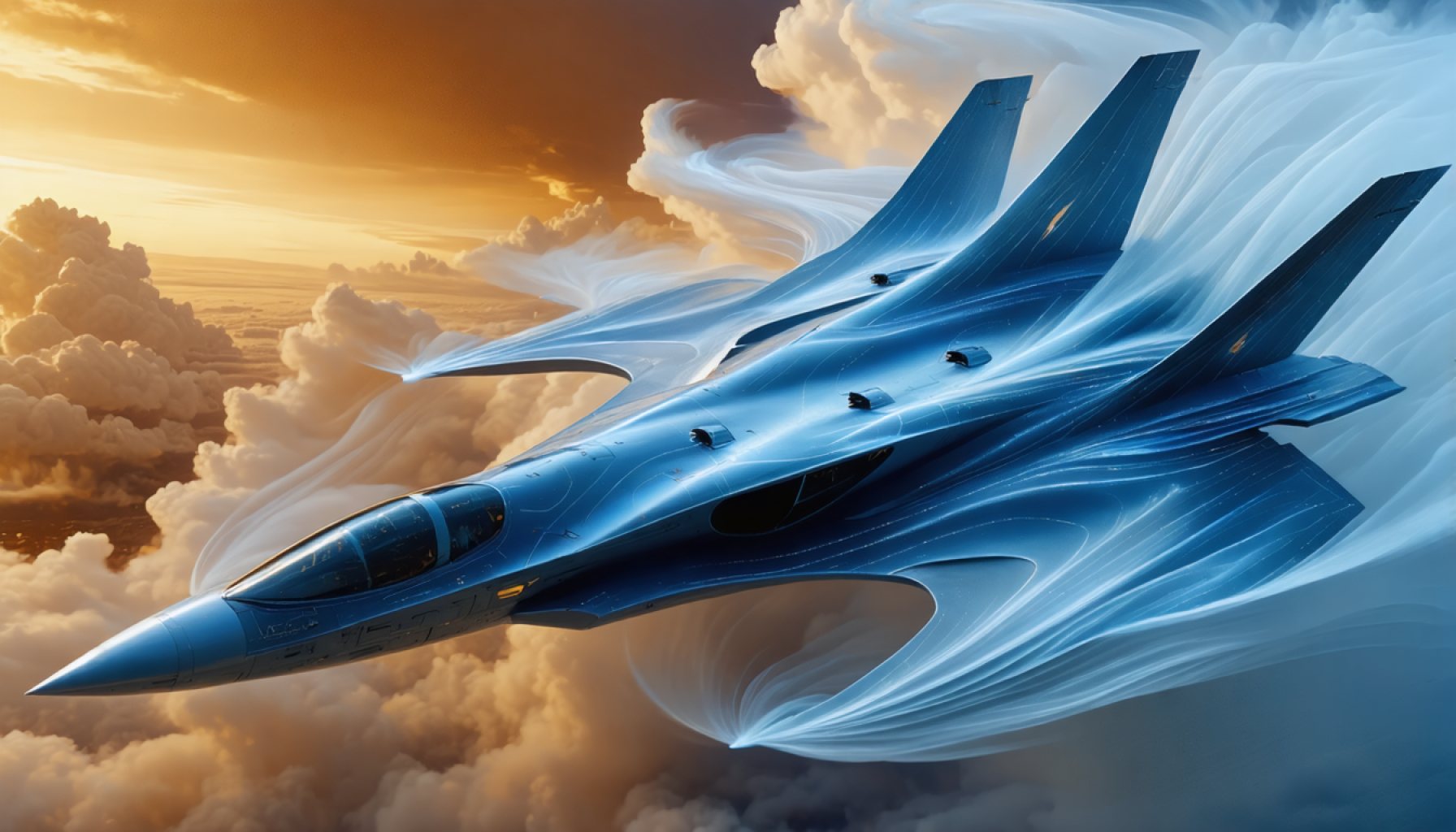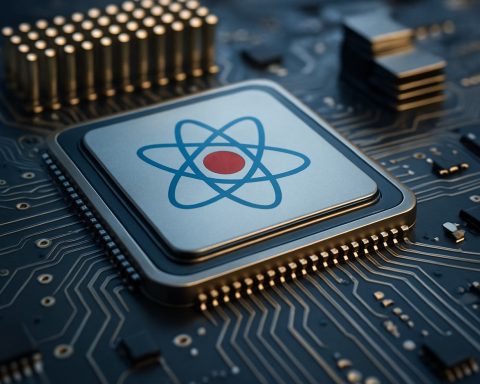- Hypersonic travel encompasses speeds exceeding Mach 5, involving complex interactions between vehicles and the atmosphere.
- The University of Illinois Urbana-Champaign team, led by Professor Levin and Ph.D. student Karpuzcu, conducted groundbreaking fully 3D simulations of hypersonic flow using the Frontera supercomputer.
- The research revealed unexpected disturbances in airflows around cone-shaped models, particularly beyond Mach 16, challenging previous 2D assumptions.
- Higher speeds result in increased air viscosity, disrupting smooth flow patterns and highlighting new engineering considerations.
- A combination of linear stability analysis, triple-deck theory, and the Direct Simulation Monte Carlo method was used to explore these complex flow disruptions.
- This study paves the way for innovations in hypersonic vehicle design, potentially enhancing safety and efficiency.
- The research underscores the importance of understanding complex dynamics to advance hypersonic flight capabilities.
The realm of hypersonic travel—where speeds soar beyond Mach 5—has always flirted with the cutting edge of human engineering. These daring velocities transform the interaction of a vehicle with the atmosphere into a dance of complexity, where the familiar flows morph into their own dynamic entities. Shattering expectations, a team of pioneering researchers at the University of Illinois Urbana-Champaign, led by Professor Deborah Levin and Ph.D. student Irmak Taylan Karpuzcu, has peered into this enigmatic world like never before.
Armed with the immense computational might of the Frontera supercomputer, their team has conducted the first-ever fully 3D simulations of hypersonic flow around cone-shaped models. These experiments go beyond the traditional two-dimensional limits, offering a revelatory glimpse into how air behaves when it rushes across surfaces at unfathomable speeds.
Imagine the cone: a deceptively simple shape that serves as the testbed for countless hypersonic vehicles. The conventional wisdom suggested a smooth, concentric flow pattern. Yet, the 3D simulations broke this illusion, uncovering disturbances that ripple through the shock waves, particularly visible when speeds rocket past Mach 16. At this threshold, the air becomes remarkably viscous, leading to disturbances that suggest new areas of scrutiny for engineers.
Behind the scenes, the meticulous simulations revealed intricate disruptions in the flow, especially pronounced in the regions near the cone’s tip. These enigmatic disruptions vanished at Mach 6, underscoring how crucial speed is in shaping these instabilities. By applying complex mathematical techniques such as linear stability analysis through triple-deck theory, followed by the use of the Direct Simulation Monte Carlo method, the researchers have unearthed these mysteries, as if untangling a hidden thread from a tightly woven tapestry.
This venture into 3D hypersonic dynamics is more than just a leap forward in computational modeling; it heralds potential advances in vehicle design that could usher in a new era of safer, more efficient hypersonic travel. By mapping the unforeseen quirks of high-speed airflows, these findings could redefine how engineers approach the daunting challenges of hypersonic flight, paving the way for innovations that might seem as futuristic as the very speed they aim to conquer.
In this thrilling convergence of science and engineering, the research emphasizes a vital truth: understanding the unseen, the unexpected, and the complex is the key to conquering the skies at hypersonic speeds.
Hypersonic Breakthrough: The Future of High-Speed Air Travel Unveiled
Introduction
Hypersonic travel, defined by speeds exceeding Mach 5, represents one of the most exhilarating challenges in aerospace engineering. Recent breakthroughs by a research team at the University of Illinois Urbana-Champaign have changed our understanding of hypersonic dynamics, unlocking new potential for high-speed travel.
The Innovations in Hypersonic Flow Simulations
The team’s use of the Frontera supercomputer to perform the first fully 3D simulations of hypersonic flow around cone-shaped models marks a significant leap forward. These simulations revealed unexpected disturbances at ultra-high speeds, particularly notable beyond Mach 16, challenging the previous assumptions of smooth flow patterns.
Key Technical Details:
– At Mach 16 and beyond: Airflow exhibits increased viscosity, leading to complex disturbances near the cone’s tip.
– Mathematical Techniques: Linear stability analysis and the Direct Simulation Monte Carlo method were pivotal in mapping these phenomena.
– Implications for Vehicle Design: Potentially safer and more efficient hypersonic vehicles could emerge from these insights, with improved understanding of airflow dynamics and shock wave behavior.
How Hypersonic Research Translates to Real-World Use Cases
1. Military Applications: Enhanced hypersonic missiles and defense systems will benefit from reduced radar detection and improved target accuracy.
2. Commercial Transport: Developing hypersonic passenger aircraft could reduce long-distance travel time significantly, making global travel more efficient.
3. Space Exploration: Hypersonic technology could revolutionize spacecraft re-entry procedures, reducing re-entry time and improving thermal protection systems’ efficiency.
Market Forecasts & Industry Trends
The hypersonic industry is expected to grow as both military and civilian sectors explore its potential. Analysts predict significant investment from government and private sectors:
– Military Spending: Increased funding for hypersonic weapons research and development.
– Commercial Ventures: Emerging companies focusing on hypersonic travel solutions, such as SpaceX and Boom Technology, aim to commercialize these technologies within the next decade (source: SpaceX).
Pros & Cons Overview
Pros:
– Drastically reduced travel times.
– Strategic military advantages.
– Potential for space industries and advanced atmospheric research.
Cons:
– High development costs.
– Technical challenges in heat management and material durability.
– Regulatory and safety concerns.
Controversies & Limitations
Despite the excitement surrounding hypersonic travel, challenges remain. The primary issues are related to heat management, reliability of materials under extreme conditions, and ensuring passenger safety. Regulations also pose potential hurdles, with safety standards needing to adapt to new technology.
Conclusion & Recommendations
These advancements in hypersonic technology have the potential to usher in a new era of travel and military strategy. For those interested in this burgeoning field, staying informed about ongoing research and development is crucial.
Quick Tips:
– Stay Updated: Follow updates from leading aerospace organizations and academic publications.
– Invest in STEM: Pursue educational opportunities that focus on aerospace engineering and related fields.
– Engage with Policy: Participate in discussions about the implications of hypersonic travel on society and the environment.
To explore more about the future of aerospace technologies, visit Nasa for insights and research updates.













